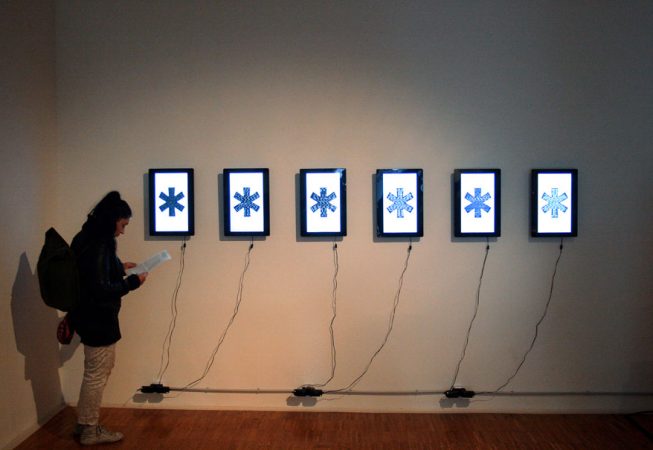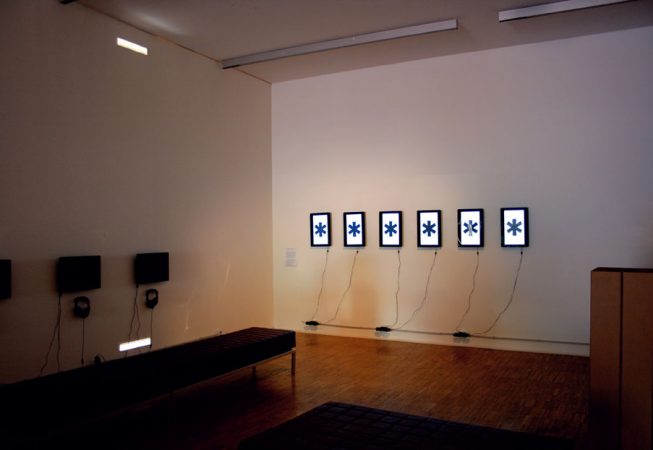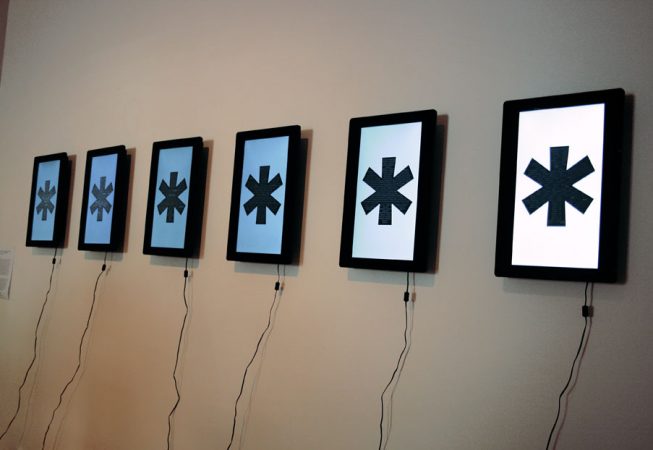Password: * * * * * * reveals popular email-passwords of internet scammers. The passwords are arranged typographically in six stars, each star containing most popular word combination with the words: ‘good’, ‘love’, ‘money’, ‘mother’, ‘jesus’, ‘bless’. Email services like Gmail, Yahoo Mail or Outlook are used by scammers to create fake identities and in combination with fictional narratives contact potential victims to lure them into advance fee payments. Vigilante anti-scam communities try to jam the scammers working practices by using storytelling and social engineering techniques as psychological manipulation to gain the trust of the scammer. By collecting and combining apparently non-relevant information they try to receive sensitive data to be able to obtain access to the scammers email passwords. Once access to a scammers email account is established, the highjacked account is searched for victims, forged documents, credit card numbers, gang communication or other sensitive information to report the scammers. The passwords in the artwork are collected from anti-scam community databases.
Exhibitions:
2016:
Contemporaneity and Crisis, Museum of Contemporary Art of Vojvodina in Novi Sad/Serbia.
2015:
Contemporaneity and Crisis, U10 Gallery, Belgrade/Serbia.
28th STUTTGARTER FILMWINTER – NETWORKED CULTURE, Stuttgart/Germany.
2014:
UUSI MUU, MUU Galleria, Helsinki,/Finland.
Art meets radical openness – AMRO 2014, Linz/Austria.
Paraflows .9, Vienna/Austria.
Publication:
- Zingerle, A. (2014), How to obtain passwords of online scammers by using social engineering methods, Cyberworlds (CW), 2014 International Conference on. IEEE.
- Zingerle, A. (2014), Revealing passwords – Using social engineering to monitor scammers communication, International Journal for Art, Design, Technology, IGI-Global.






